Pets can bring so much joy and companionship into our lives, but they can also bring some challenges, especially when it comes to keeping our rugs clean. From shedding fur to accidents and tracking in dirt, there are a few common obstacles pet owners face. With the right preparation, cleaning routine, and preventative measures, it is possible to enjoy both your pets and your beautiful rugs in harmony.
In this article, we will explore why it is essential to keep rugs clean with pets, the challenges you may encounter, and practical tips on how to maintain your rugs while living with furry friends. So, let's dive in and learn how to create a pet-friendly home without sacrificing style or cleanliness.
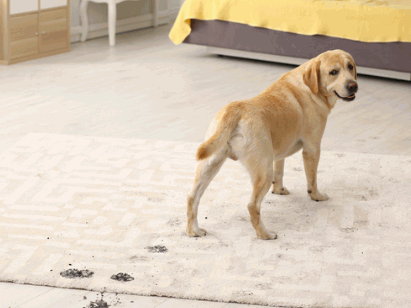
Why Is It Important To Keep Rugs Clean With Pets?
Maintaining clean rugs in a household with pets is crucial not only for the overall hygiene and aesthetics of the living space but also for the well-being of both the pets and the residents.
Cleanliness in a home with pets goes beyond just appearances; it plays a significant role in reducing the spread of allergens and preventing the accumulation of pet dander, which can trigger allergies or respiratory issues, especially in sensitive individuals.
Maintaining a clean environment helps in preventing the spread of bacteria and parasites that may be harmful to pets and humans alike. By using pet-friendly cleaning products, one can ensure that the cleanliness of the home does not compromise the health and safety of the furry occupants.
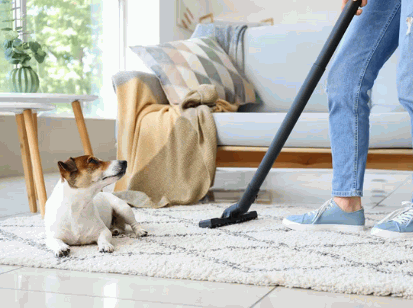
What Are The Common Challenges Of Keeping Rugs Clean With Pets?
Keeping rugs clean with pets poses several challenges, including controlling shedding, managing pet accidents, dealing with dirt and mud tracks, and combating stains and odors that result from pet-related messes.
- Shedding control can be particularly challenging, as pet fur can accumulate on rugs quickly and be difficult to remove completely.
- To prevent accidents, it's crucial to train pets properly and provide easy access to designated elimination areas.
Regularly vacuuming and spot-cleaning can help manage soil and mud tracks, minimizing their impact on rug cleanliness. When it comes to stains and odors, using pet-specific cleaners and techniques can efficiently tackle these issues, ensuring a fresh and sanitary environment for both pets and owners.
Shedding
Shedding is a natural phenomenon for pets, and their fur can accumulate on rugs, affecting the cleanliness and appearance of the flooring.
This shedding process is crucial for pets to regulate their body temperature and renew their coat. Excessive shedding can lead to a buildup of fur around the house.
To minimize shedding, regular grooming is essential. Brushing your pet's coat frequently helps remove loose fur and prevents it from ending up on your rugs. Using deshedding tools designed for your pet's specific coat type can be highly effective in controlling shedding.
In addition to grooming, ensuring your pet has a balanced diet rich in omega-3 fatty acids can improve coat health and reduce shedding. To further manage shedding, consider using furniture covers or designated pet blankets to limit fur transfer onto rugs and carpets.
By incorporating these grooming techniques and shedding control methods, you can effectively minimize the impact of shedding on your home.
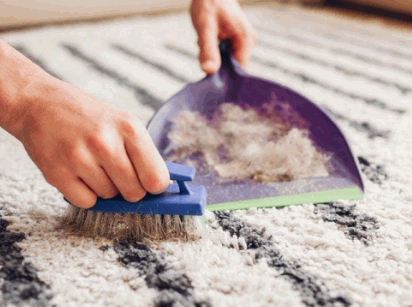
Accidents
Pet accidents such as urine or vomit can lead to stubborn stains and unpleasant odors on rugs if not cleaned and treated promptly.
To effectively handle pet accidents on rugs, it's essential to act swiftly. Begin by blotting up as much of the mess as possible with paper towels or a clean cloth. Avoid rubbing the stain, as this can push it deeper into the fibers.
Once you've absorbed excess liquid, treat the affected area with a pet-safe detergent specifically formulated for stain removal. Thoroughly rinse the area with water and blot it dry. For tougher stains or odors, consider using an enzymatic cleaner to break down organic matter.
Remember, immediate cleanup is key to preventing lasting damage and maintaining the freshness of your rug.
Dirt And Mud
Pets tracking dirt and mud from outside onto rugs can soil the fibers and create unsightly messes that require regular cleaning and maintenance.
To help prevent this issue, one effective measure is to place absorbent mats at entry points to capture dirt and moisture before pets reach the rugs. Regularly sweeping and shaking the rugs outdoors can help minimize the amount of debris that gets trapped in the fibers. For more thorough cleaning, consider using a vacuum with a beater bar or rotating brush to tackle soil accumulation deep within the rug.
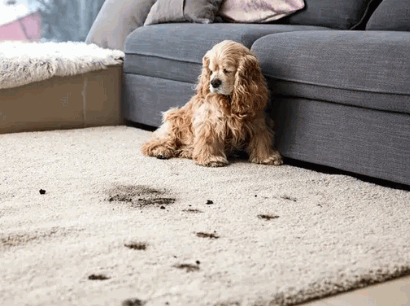
How To Prepare Your Home And Rugs For Pets?
Before bringing pets into your home, it is essential to prepare both the living space and rugs to create a pet-friendly environment that promotes cleanliness and pet well-being.
Considering the playful nature of pets, opting for rug materials that are easy to clean and durable is crucial. Some highly recommended pet-friendly rug materials include indoor-outdoor rugs, sisal, or rugs made of synthetic fibers like nylon. These materials are resilient to pet accidents and are easier to maintain.
Strategically placing rugs in areas where pets spend the most time can help prevent slips and falls. By incorporating rugs under food and water dishes or near entryways, you can create comfortable spots for your pets to rest and reduce tracking dirt throughout the house.
Regular grooming of your pets also plays a significant role in maintaining a clean home environment, as it helps to minimize shedding and dander accumulation on rugs and floors."
Choose The Right Rug Material
Selecting the appropriate rug material is crucial for withstanding the wear and tear associated with pets while maintaining the aesthetic appeal of your living space.
When looking for a pet-friendly rug, it is essential to consider characteristics such as stain resistance, durability, and ease of cleaning. Synthetic fibers like nylon and polyester are known for their resistance to pet stains and easy cleanability, making them a practical choice for households with pets. On the other hand, natural fibers such as wool and sisal offer durability and a sophisticated look, although they may require more maintenance.
Assessing your pet's behavior and the level of foot traffic in your home can help you determine the best rug material to ensure longevity and cleanliness in your living space.
Create A Pet-Friendly Space
Designating a pet-friendly space within your home can help protect rugs and furniture from pet-related damage and promote a structured cleanliness routine that benefits both the pets and the household.
- One effective way to create a designated pet area is by utilizing pet gates to confine your furry friends to specific zones. This not only limits their access to certain parts of the house but also helps in keeping furniture and rugs safe from potential scratches or accidents.
- Consider investing in protective covers or blankets for your sofas and chairs to prevent stains and wear. Regular cleaning of high-traffic areas, such as vacuuming carpets and wiping down surfaces, is crucial to maintaining a hygienic living space. By incorporating these strategies, you can strike a balance between pet ownership and a clean, organized home.
Train Your Pet
Training your pet is essential for instilling good behavior, preventing rug damage, and establishing a grooming schedule that contributes to a clean and harmonious living space.
- Pets that are properly trained not only exhibit good behavior but also reduce the risk of accidents and rug destruction.
- Supervision is key during the training process to ensure consistency and safety for both your pet and your home.
- By setting clear boundaries and providing positive reinforcement, pets learn what is expected of them.
Regular grooming sessions not only keep your pets clean but also prevent shedding and allergens from accumulating in your home. Training your pet enhances the bond between you and your furry companion while promoting a hygienic environment for your family.
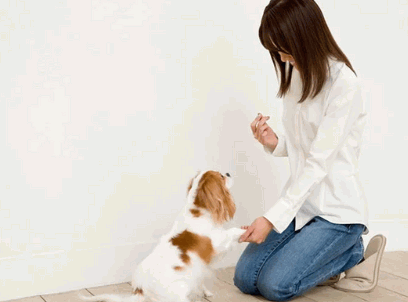
How To Clean And Maintain Rugs With Pets?
Regular cleaning and maintenance practices are essential for preserving the condition of rugs in a pet-friendly household, ensuring they remain fresh, hygienic, and free from pet-related debris.
Implementing a routine cleaning schedule not only enhances the visual appeal of your rugs but also plays a vital role in maintaining indoor air quality. Vacuuming regularly is key to preventing the buildup of pet hair and dander while spot-cleaning spills immediately help prevent stains from setting in. Periodic deep cleaning sessions can prolong the lifespan of your rugs and eliminate stubborn odors. For effective pet hair removal, using a rubber glove or a squeegee can be highly efficient in loosening and lifting embedded fur. Consistent care for your rugs is paramount to their longevity and overall cleanliness.
Regular Vacuuming
Regular vacuuming is a fundamental cleaning practice that helps remove pet hair, control shedding, and maintain the cleanliness of rugs, especially in high-traffic areas where pet activity is prominent.
By vacuuming frequently, pet owners can significantly reduce the accumulation of pet hair in their homes, preventing it from embedding deeply into carpets and upholstery.
When dealing with shedding control, it's advisable to vacuum both with and against the grain of the carpet fibers to effectively capture loose hair.
Focus on high-traffic zones such as entryways and living rooms where pets spend most of their time to target areas prone to heavy shedding.
Leveraging vacuum attachments like crevice tools and upholstery brushes can enhance precision in removing pet hair from hard-to-reach spots and furniture, ensuring a thorough cleaning process.
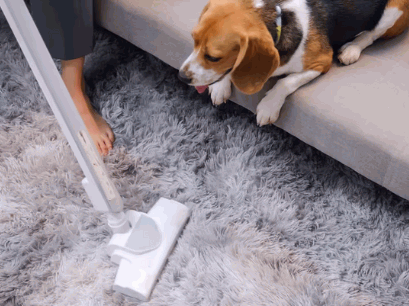
Spot Cleaning
Prompt spot cleaning is necessary to address spills and stains on rugs, requiring the use of pet-friendly detergents and effective stain removal techniques to prevent lasting damage.
Pet owners understand the importance of immediate action when accidents happen, as stains can quickly set and become difficult to remove. Using detergents that are safe for pets ensures that your furry companions are not exposed to harmful chemicals during the cleaning process.
To effectively remove stains, start by blotting the spill with a clean cloth to absorb excess liquid. Then, apply a small amount of the pet-safe detergent and gently scrub the stained area with a soft brush or cloth. Rinse thoroughly with water and allow the rug to air dry completely for best results.
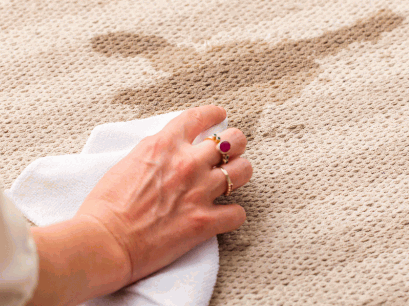
Deep Cleaning
Periodic deep cleaning is essential for eliminating pet odors, removing embedded dirt from pet accidents, and maintaining the freshness and hygiene of rugs, often requiring professional cleaning services or specialized equipment such as steam cleaners.
Regularly deep cleaning your rugs not only helps to combat odors and stains left by pets but also ensures a healthier environment for both your furry friends and your family. Professional cleaning services offer a thorough and effective solution, reaching deep into the fibers to remove any lingering odors and stubborn stains that regular cleaning may not fully eliminate.
When it comes to maintaining the longevity of your rugs, steam cleaning stands out as a valuable method. The high heat and moisture of steam effectively lift dirt and kill bacteria, resulting in a more hygienic and fresh rug surface. Planning deep cleaning sessions around your pet's activity levels can help in targeting areas that need more attention, especially after incidents or during shedding seasons.
Take a look: Will Steam Cleaning Get Blood Out Of Carpet
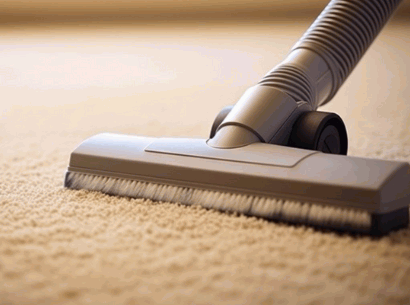
What Are Some Tips For Preventing Pet-Related Rug Damage?
Implementing preventive measures and adapting to pet behavior can significantly reduce the risk of pet-related damage to rugs, preserving their condition and prolonging their lifespan.
- Using rug pads underneath rugs can provide stability and prevent them from shifting or sliding when pets run or play on them.
- Regular grooming and brushing of pets can help control shedding, reducing the amount of fur that ends up embedded in the rug fibers.
Understanding common pet behaviors, such as scratching or digging, can help owners anticipate potential rug damage and take proactive steps to protect their rugs, such as providing scratching posts or designated digging areas.
Use Rugs With Patterns Or Dark Colors
Opting for rugs with patterns or dark colors can help conceal pet stains and minimize the visibility of dirt, making them a practical and pet-friendly choice for households with pets.
These rugs not only offer aesthetic appeal but also serve a functional purpose by providing a practical solution for pet owners. The patterns and dark hues disguise any accidental spills or muddy paw prints, maintaining the rug's cleanliness without constant upkeep. Placing these rugs strategically in high-traffic areas or pet-frequented spots can prolong their lifespan and ensure that they continue to enhance the overall look of the room. By choosing the right rug and placement, pet owners can enjoy both style and functionality in their living spaces.
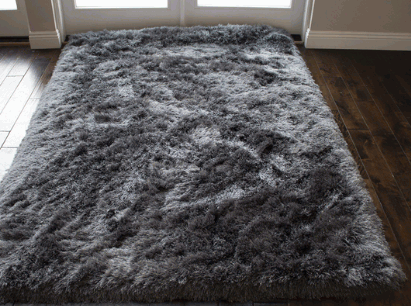
Keep Your Pet's Nails Trimmed
Maintaining your pet's nails trimmed is essential for preventing scratches on rugs and furniture, contributing to both the longevity of the flooring and the protection of household furnishings.
Regular nail trimming ensures that your pet's claws remain at a safe length, decreasing the likelihood of accidental snagging or tearing of carpets and upholstery. Keeping your furry friend's nails well-groomed also helps to prevent issues like ingrown nails and overgrowth, which can lead to discomfort for your pet. By incorporating nail trimming as part of your pet care routine, you not only safeguard your home's decor but also promote the overall health and well-being of your beloved animal companion.
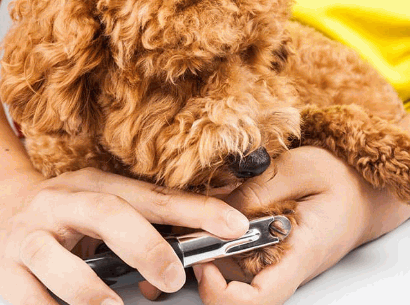
Provide Plenty Of Toys And Scratching Posts
Supplying your pets with ample toys and scratching posts can divert their attention, reduce fur shedding on rugs, and prevent boredom-induced messes, fostering a harmonious living environment for both pets and residents.
Scratching posts are particularly effective in redirecting a cat's natural urge to scratch, saving your beloved furniture and carpets from destruction. By offering designated scratching areas, you not only protect your belongings but also promote healthy scratching habits.
Engaging your pets with a variety of toys not only provides mental and physical stimulation but also helps diminish excess energy that may lead to unwanted behaviors.
Creating a stimulating environment through enrichment items is crucial in promoting overall well-being and contentment for your furry companions.
What Are Some Tips For Preventing Pet-Related Rug Damage?
Implementing preventive measures and adapting to pet behavior can significantly reduce the risk of pet-related damage to rugs, preserving their condition and prolonging their lifespan.
One simple yet effective tip to safeguard your rugs is to use rug pads underneath them. Rug pads not only provide stability and prevent slipping but also act as a protective layer against stains and excessive wear caused by pets.
It's essential to address shedding control for pets with heavy shedding tendencies. Regular grooming and vacuuming can help minimize the amount of loose fur that clings to your rugs, maintaining their cleanliness and appearance.
Understanding common pet behaviors like scratching or digging can also guide you in placing deterrents or providing suitable alternatives to protect your rugs from damage.
Use Rugs With Patterns Or Dark Colors
Opting for rugs with patterns or dark colors can help conceal pet stains and minimize the visibility of dirt, making them a practical and pet-friendly choice for households with pets.
The stain-resistant properties of patterned or dark-colored rugs make them ideal for homes with pets, as they can easily camouflage any accidental spills or muddy paw prints. By strategically placing these rugs in high-traffic areas or near entryways, you can not only enhance the durability of the rug by minimizing wear and tear but also add a touch of style to your space. Dark-colored rugs are known for their ability to maintain a fresh and clean appearance, even when faced with the messy realities of pet ownership.
Keep Your Pet's Nails Trimmed
Regular nail trimming for pets not only helps safeguard your carpets and sofas from damage but also plays a vital role in maintaining the overall cleanliness of your home.
Overgrown nails can not only cause discomfort for your furry friend but also increase the likelihood of accidents and injuries around the house.
By establishing a routine for trimming your pet's nails, you can reduce the risk of them getting caught on fabrics or accidentally scratching surfaces. This simple measure can save you from expensive repairs and keep your living space looking neat and well-maintained.
Provide Plenty Of Toys And Scratching Posts
Supplying your pets with ample toys and scratching posts can divert their attention, reduce fur shedding on rugs, and prevent boredom-induced messes, fostering a harmonious living environment for both pets and residents.
By offering a variety of toys and interactive playthings, you are not only enriching your pets' lives but also promoting their physical and mental well-being.
Scratching posts serve as an excellent outlet for your pets to satisfy their natural urge to scratch, minimizing the chances of them damaging your prized rugs or furniture.
Engaging your pets in play activities helps in reducing excess fur shedding, keeping your home cleaner and more manageable.
Creating a stimulating environment for your pets encourages their natural behaviors and contributes to a happier and healthier life for them.
